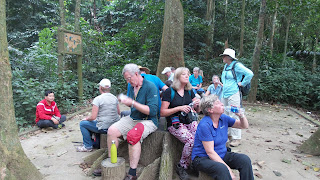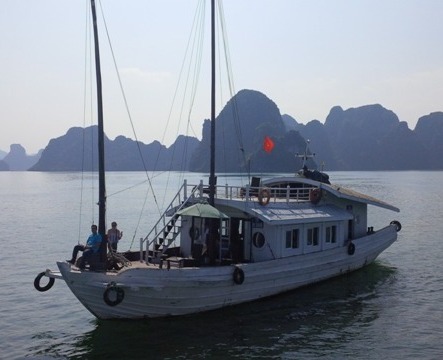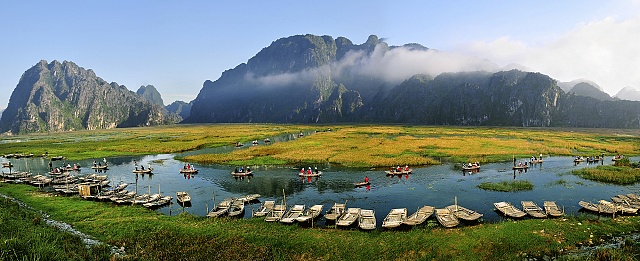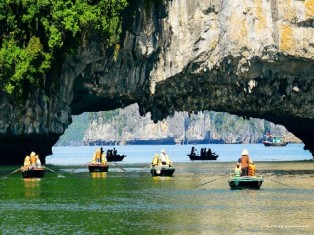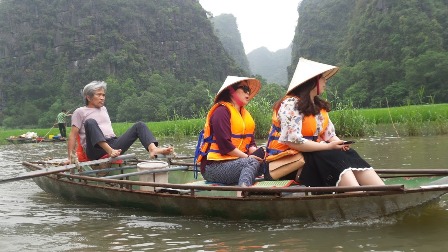Hoian ancient town is a world heritage site in central Vietnam, about 30 km from Da nang airport.
Don't miss to visit lovely Hoian when you spend your holiday in Vietnam.
Hoi An ancient town is located at downstream of Thu Bon River, in Quang Nam Province, Vietnam. Hoi An used to be international commercial port, the meeting place of the merchant ships of Japan, China and the Western Europe during the 17th - 18th centuries.
By the 19th century, due to water transportation here is no longer convenient, Hoian port was replaced by Danang international port, built by French. Fortunately, Hoian was not destroyed during two wars and avoid the process of massive urbanization by the late 20th century. Early 1980, the value of architecture and culture of the ancient town of Hoi An was restored, and soon became one of the best tourist attractions in Vietnam.
The most common type of housing in Hoi An is 2 storey houses the town houses with narrow and long shape or called tubular house. The main materials used to build houses are very high strength and durability due to the harsh climate and the annual flooding.
Typically, the structure of house is with wood frame, brick walls. The average size of the house is 4 to 8 meter wide,10 to 40 meter deep, varying according to each street. Common ground layout of the houses here are: sidewalks, patios, the main house, outbuildings, porch, open air middle yard, toilet, and garden.
House space includes 3 parts: trade space, living space and worship space. The houses overlook to 2 main streets, or one side is on main street and the other side is on Thu Bon river, where they load and unload their commodities.
Highlights in Hoian for a visit are Japanese Bridge, Tan Ky Old House, Chinese assembly halls, Fujian assembly hall, Tran family chapel, Tra Que herb village, Kim Bong carpentry village, Hoian museum, Hoian local market.
Don't miss to visit lovely Hoian when you spend your holiday in Vietnam.
Hoi An ancient town is located at downstream of Thu Bon River, in Quang Nam Province, Vietnam. Hoi An used to be international commercial port, the meeting place of the merchant ships of Japan, China and the Western Europe during the 17th - 18th centuries.
By the 19th century, due to water transportation here is no longer convenient, Hoian port was replaced by Danang international port, built by French. Fortunately, Hoian was not destroyed during two wars and avoid the process of massive urbanization by the late 20th century. Early 1980, the value of architecture and culture of the ancient town of Hoi An was restored, and soon became one of the best tourist attractions in Vietnam.
The most common type of housing in Hoi An is 2 storey houses the town houses with narrow and long shape or called tubular house. The main materials used to build houses are very high strength and durability due to the harsh climate and the annual flooding.
Typically, the structure of house is with wood frame, brick walls. The average size of the house is 4 to 8 meter wide,10 to 40 meter deep, varying according to each street. Common ground layout of the houses here are: sidewalks, patios, the main house, outbuildings, porch, open air middle yard, toilet, and garden.
House space includes 3 parts: trade space, living space and worship space. The houses overlook to 2 main streets, or one side is on main street and the other side is on Thu Bon river, where they load and unload their commodities.
Highlights in Hoian for a visit are Japanese Bridge, Tan Ky Old House, Chinese assembly halls, Fujian assembly hall, Tran family chapel, Tra Que herb village, Kim Bong carpentry village, Hoian museum, Hoian local market.
























